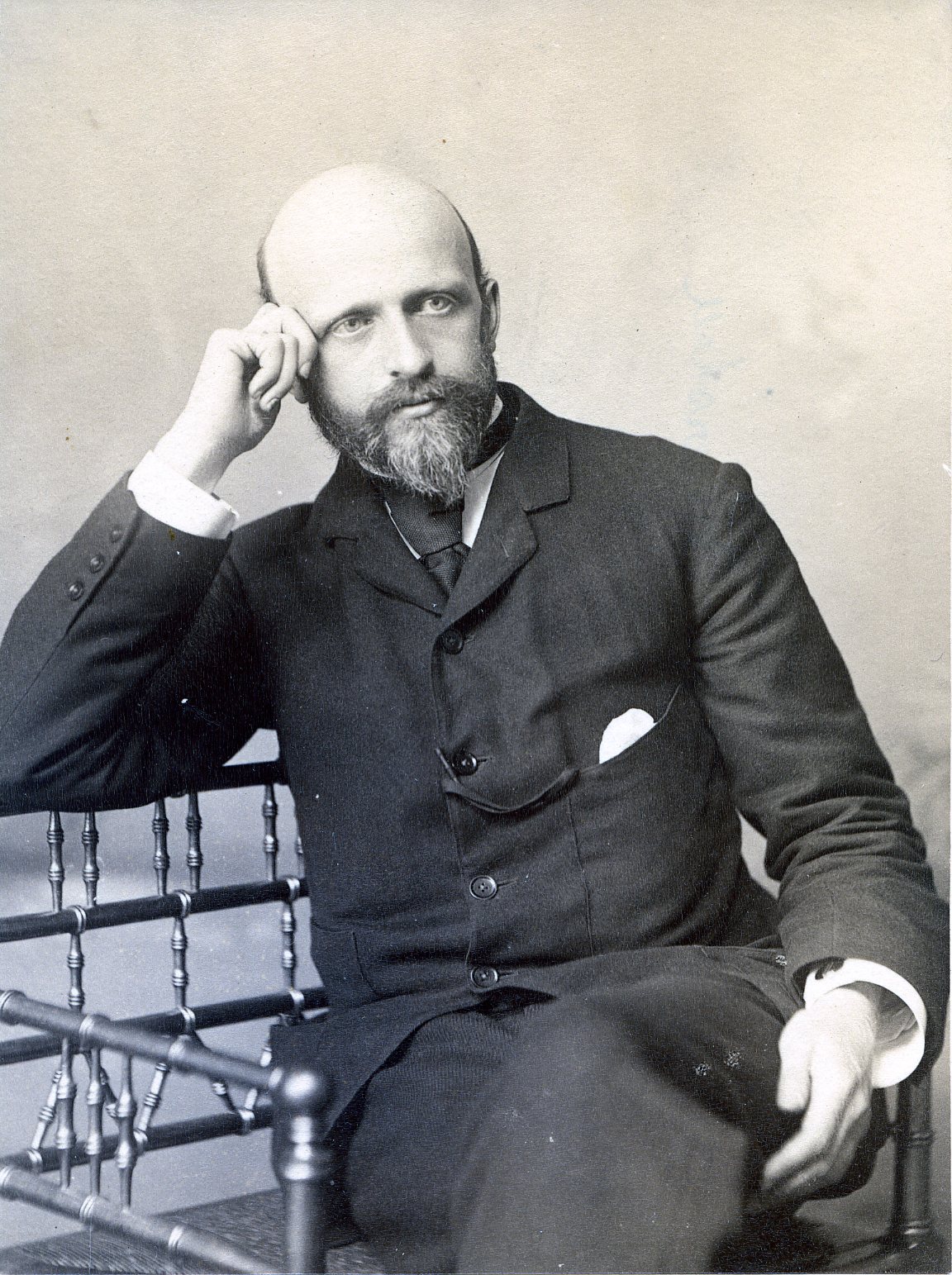Architect/Psychologist
Centurion, 1891–1927
Born 22 July 1852 in New York (Manhattan), New York
Died 3 May 1927 in New York (Manhattan), New York
Buried South Cemetery , Woodbury, Connecticut
, Woodbury, Connecticut
Proposed by Louis Comfort Tiffany and Lockwood de Forest
Elected 7 March 1891 at age thirty-eight
Archivist’s Note: Father-in-law of Christopher Minot Weld
Proposer of:
Seconder of:
Century Memorial
To most of us the Century is a place for occasional visits which leave vain regrets that they had not been more frequent. Many of us associate the Club mostly with the cheerful luncheon group and our own recurrent curiosity as to what manner of Centurion will have been selected by the third floor autocrat as an appropriate right-hand neighbor for us at the table. But the real Club atmosphere surrounds the fellow-Centurion who makes one of the intimate dinner circle of five or six when every one else is rushing out of town; who will be discovered, book in hand, in an easy chair on the far side of the reading-room when the rest of the Club seems deserted. Nobody filled that portrait like Henry Rutgers Marshall. The smaller the group around the dining-table, the fewer the occupants of library or reading-room, the more certain was Marshall’s presence, his survey of the newcomer over his eye-glasses, and his friendly conversation.
To Marshall the Century was more than a social refuge or an occasional headquarters; it was his home, and he was as careful and jealous of its interests as if he had chosen it for his family. He could not help watching for things that had gone wrong, and the stoutest house-committeeman would sometimes guiltily take the left side of the main staircase when he saw Marshall ascending on the right. It was because he knew that, if Marshall had something to call severely to his attention, Marshall would probably be right. This clear idea of how things ought to be done, and how not, served a purpose elsewhere than at the Century. Closely as Marshall seemed to be identified with the Club, his activities were distributed to certain other fields which did not touch his Century affiliations at all. By profession and education an architect, he had for eight years been the active secretary and virtual executive head of the Municipal Art Commission. No selection could have been more perfect, and none more unlikely to be knowingly made by city officials with the not unfamiliar bent for promoting second-rate and inartistic city work.
To the sponsors of amateur sculptors and backyard architects who aspired for immortality through the placing of their work in city parks or squares, Marshall was a hopeless obstacle. The statues in the Mall of Central Park, whose contortions sometimes haunt the New York citizen’s mind in a restless night, would never have mounted their pedestals if Marshall had been municipal art commissioner half a century ago. There was a certain humor in the fact that, being what he was and with the manner that he had, he should have been associated during his term of office with just the chief whom a sardonic fate had at that time wished upon the city. Yet the personage always referred to by our Municipal Commissioner as “Red Mike” had an extraordinary respect for Marshall, and indeed there was nothing of the cynical or contentious in his relations, either with the Mayor or fellow-commissioners. One of them recalls not only Marshall’s ideal fitness for the place and his enjoyment in performing its duties, but the commission’s liking for his forceful expression of his own independent judgment and for the good humor with which he acquiesced when the others differed with him. Another couples recognition of his zeal, tact and fine artistic feeling with reminiscence of his thoughtful and kindly effort to ease the path of his associates.
Probably most of Marshall’s club associates knew even less of his psychological writing than of his municipal achievement. It was no less a critic than William James who wrote of Marshall’s “Pain, Pleasure and Aesthetics” that “his learning is admirably complete,” that the book “is full of shrewd and original psychology,” and that its qualities, in the existing state of the science, “render it almost epoch-making.” Marshall’s position as psychologist was quite his own. He knew the game; he was familiar with all the modern methods and points of views of this science; but he had certain very useful qualities in his personal equipment. He had not been technically trained; in fact, modern laboratory psychology hardly existed when he began to study it. But the result of all this was that Marshall’s contributions, while in substance technical, were also very human, and that he won a place in psychology as an extraordinarily conscientious, thoughtful and well equipped humanist. Readers of his books learn not only something of technical psychology but also the subtle causes of our daily mental processes. Columbia, Yale and Princeton placed him on their lecture courses; he had been President of the American Psychological Association. Yet of all men, he talked least in the Century of his writings and his hobbies; the recollection which will come to his fellow-Centurions’ minds is of that shrewd and humorous exchange of views across the table, when the dinner company passed its judgment on the entirely unphilosophical questions of the day.
Alexander Dana Noyes
1928 Century Association Yearbook

